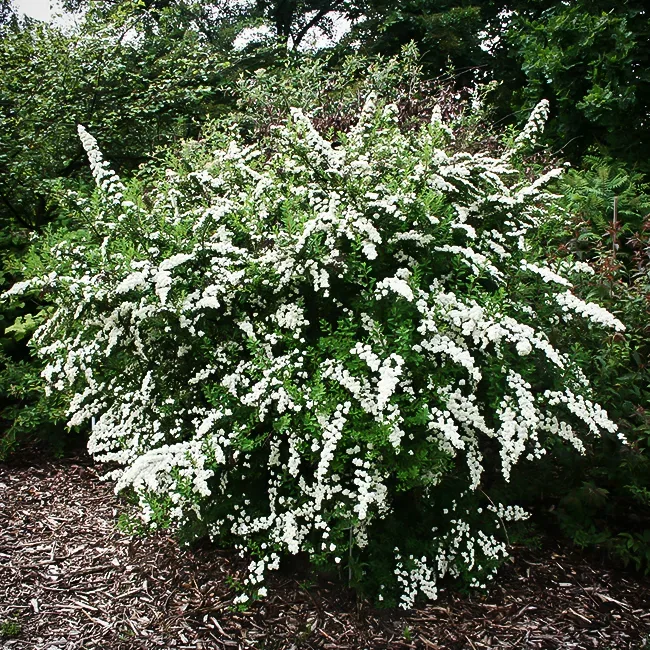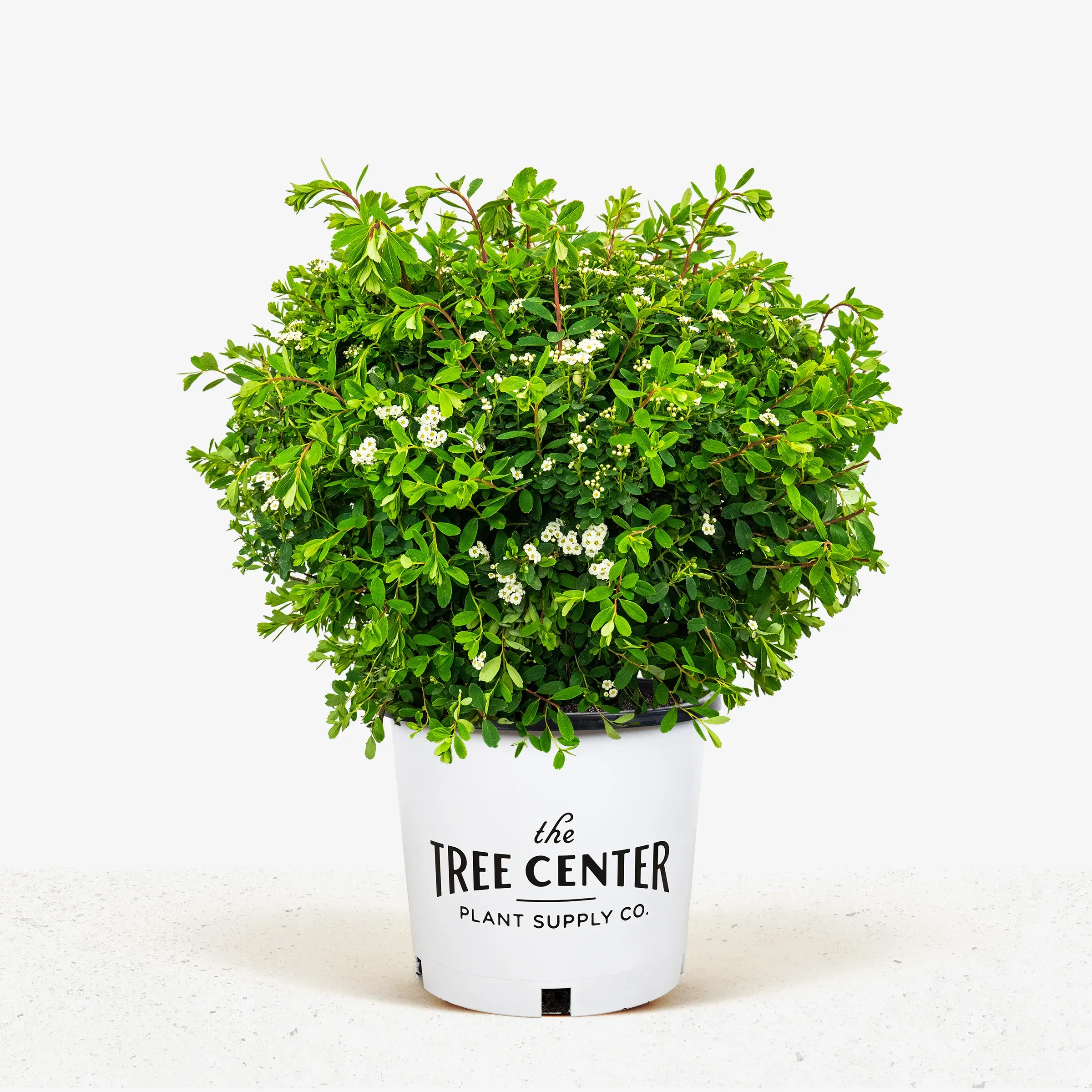Snowmound Spirea: The Easytogrow Shrub That Will
Snowmound Spirea: The Easy-to-Grow Shrub That Will
Snowmound spirea is a deciduous shrub that produces beautiful cascading clusters of white flowers in the spring. Its dark green leaves turn a vibrant yellow-orange in the fall, adding a colorful touch to any landscape. This easy-to-grow shrub is a great choice for borders, mass plantings, and low hedges, and it attracts pollinators to your garden.
Here are some of the reasons why Snowmound spirea is a great choice for your garden:
- Easy to grow: Snowmound spirea is a very hardy plant that can tolerate a wide range of conditions, including full sun, partial shade, and a variety of soil types. It is also drought-tolerant and doesn't require much fertilizer.
- Abundant blooms: Snowmound spirea produces a profusion of small white flowers in early to mid-spring. The flowers are borne on long, arching branches, creating a cascading effect.
- Low maintenance: Once Snowmound spirea is established, it requires very little maintenance. You can prune it in the spring to shape it and remove any dead or damaged branches.
- Attracts pollinators: The fragrant flowers of Snowmound spirea attract bees, butterflies, and other pollinators. This makes it a great choice for a pollinator garden.
- Decorative foliage: In addition to its beautiful flowers, Snowmound spirea also has attractive foliage. The leaves are dark green in the spring and summer, and they turn a vibrant yellow-orange in the fall.
If you are looking for an easy-to-grow, low-maintenance shrub that will add beauty and color to your garden, Snowmound spirea is a great choice.
Here are some tips for planting and caring for Snowmound spirea:
- Plant Snowmound spirea in full sun to partial shade.
- The soil should be well-drained.
- Water Snowmound spirea regularly, especially during the first year after planting.
- Fertilize Snowmound spirea once a year in the spring with a balanced fertilizer.
- Prune Snowmound spirea in the spring to shape it and remove any dead or damaged branches.
Snowmound spirea is a relatively pest- and disease-free plant. However, it can be susceptible to powdery mildew, especially in humid climates. If your Snowmound spirea develops powdery mildew, you can treat it with a fungicide.
With proper care, Snowmound spirea can live for many years. It is a beautiful and versatile plant that can add a touch of elegance to any garden.
If you're looking for a beautiful, easy-care shrub to add to your garden, snowmound spirea is a great choice. With its delicate white flowers and graceful arching branches, it's sure to add a touch of elegance to any landscape.
Snowmound spirea (Spiraea nipponica 'Snowmound') is a deciduous shrub that grows 3 to 5 feet tall and wide. It blooms in mid- to late spring, producing clusters of small, white flowers that cover the entire plant. The flowers are followed by attractive red-orange foliage in the fall.
Snowmound spirea is a relatively low-maintenance plant. It prefers full sun but can tolerate light shade. It is drought-tolerant and does not require a lot of fertilizer. Pruning is not necessary, but you can lightly shear the plant after flowering to keep it neat and tidy.
If you're interested in learning more about snowmound spirea, I recommend visiting Garden Wiki. This website has a wealth of information about the plant, including its care requirements, planting tips, and pest and disease information.
FAQ of snowmound spirea
- What are the best conditions for growing snowmound spirea?
Snowmound spirea performs best in full sun, producing more blooms, vibrant color and brighter fall foliage. Plants can take light shade, with spring bloomers more shade tolerant than summer bloomers. The soil should be well-drained and loamy.
- How much water does snowmound spirea need?
Snowmound spirea needs regular watering, especially during the first year after planting. Once established, it is more drought tolerant. Water deeply once a week during the summer months.
- How to care for snowmound spirea?
Snowmound spirea is a relatively low-maintenance plant. Prune in the spring to remove any dead or damaged branches. You can also deadhead spent blooms to encourage reblooming.
- What are the common pests and diseases of snowmound spirea?
The most common pests of snowmound spirea are aphids, spider mites, and scale insects. These pests can be controlled with insecticidal soap or neem oil. The most common disease of snowmound spirea is powdery mildew. This can be prevented by watering in the morning so that the leaves have a chance to dry before nightfall. If powdery mildew does occur, you can treat it with a fungicide.
- How long does snowmound spirea live?
Snowmound spirea can live for 10-15 years.
Image of snowmound spirea
- Snowmound spirea in full bloom. The white flowers are arranged in small clusters and cover the entire shrub. The shrub is about 3-4 feet tall and has a rounded shape.

- Snowmound spirea in fall. The leaves of the shrub turn orange, purple, and red in the fall. The flowers have faded but are still visible.

- Snowmound spirea as a hedge. Several snowmound spirea shrubs have been planted together to form a hedge. The shrubs are in full bloom and the white flowers create a beautiful backdrop for the green leaves.

- Snowmound spirea in a container. A snowmound spirea shrub is planted in a container and placed on a patio. The shrub is in full bloom and the white flowers add a touch of elegance to the patio.

- Snowmound spirea in a woodland garden. A snowmound spirea shrub is planted in a woodland garden. The shrub is in full bloom and the white flowers contrast nicely with the dark green leaves of the surrounding trees.

Post a Comment for "Snowmound Spirea: The Easytogrow Shrub That Will"